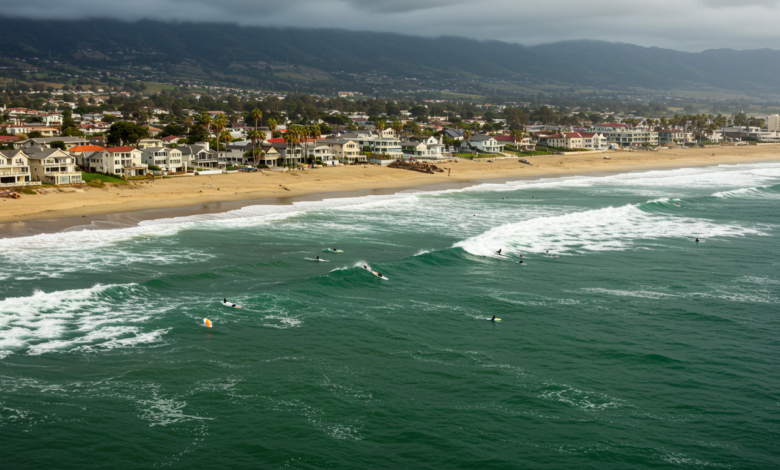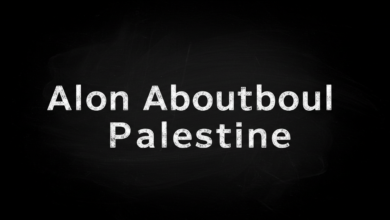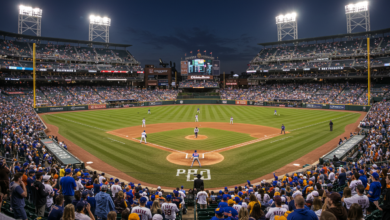Tsunami Watch California 🌊

H2 – Introduction: Understanding a Tsunami Watch
A Tsunami Watch in California signals a potential tsunami threat. It does not mean landfall is certain. However, it urges residents to stay alert. Meanwhile, emergency systems kick into gear. Additionally, officials monitor real-time data from NOAA centers. Redditers often share what they see and feel. This article explains what a watch means, California’s tsunami risk, recent alerts, how Reddit reacts, and how to prepare.You know about theglobespot, andaazdaily, openrendz and tsunami watch california also Buzzfeed.
H2 – What Is a Tsunami Watch?
H3 – Definitions and Alerts
A Tsunami Advisory, Watch, or Warning comes from NOAA’s National Tsunami Warning Center, Pacific Tsunami Warning Center, or West Coast/Alaska centers Earthquake Country Alliance+2Tsunami Warning Centers+2Tsunami.gov+2.
-
A Watch alerts of possible dangerous waves within hours.
-
A Warning tells coastal folks to evacuate.
-
An Advisory warns of hazardous currents without guaranteed flooding.
H3 – Distinguishing Watch from Warning
A watch gives lead time—usually a few hours. A warning means a tsunami is likely or arriving. Meanwhile, advisories mean stay safe near water but no evacuation required.
H2 – Why California Faces Tsunami Risk
H3 – Plate Boundaries & Subduction Zones
California’s coastline sits atop fault systems. The Cascadia Subduction Zone off Northern California, Oregon, and Washington can generate massive earthquakes and ~30 m tsunamis Tsunami.govWikipedia.
The offshore Ventura Fault near Santa Barbara may trigger equally destructive waves Wikipedia.
H3 – Distant vs. Local Tsunami Sources
Distant tsunamis come from earthquakes far away—e.g., Alaska, Japan. These give hours of notice.
Near-source events offer little warning—minutes at best—due to fast-traveling waves Caloes.
H2 – Historical Tsunami Events in California
H3 – The 1960 Chile Tsunami
A powerful 9.5 quake in Chile caused 4‑ft tsunamis in Southern California. Harbors like Santa Monica took a hit USGS+2alertsandiego.org+2TIME+2.
H3 – 1812 Santa Barbara Quake
That quake sent local tsunamis up to 10 feet high, damaging structures and ships alertsandiego.org.
H3 – 1964 Alaska Quake & Crescent City
Crescent City suffered flood damage and fatalities after the 1964 Alaskan earthquake generated powerful waves locally Facebook+6Wikipedia+6alertsandiego.org+6.
H3 – Recurring Waves in Crescent City
Between 1933–2008, Crescent City recorded 31 tsunami events. Eleven wave run-ups exceeded one meter Wikipedia+1Earthquake Country Alliance+1.
H2 – Recent Tsunami Watch Alerts
H3 – July 2025 Watch from Alaska
On July 20, 2025, NOAA issued a Tsunami Information Statement after a 6.1 M Alaska quake—also affecting California Earthquake Country Alliance+4UC Weather+4Tsunami Warning Centers+4. Though no warning followed, the watch informed coastal residents.
H3 – Redundant California Alerts
Sometimes, California issues watches even for moderate offshore quakes (~7.0 M) by mistake RedditReddit.
Reddit users replied:
“California’s tsunami alert was a mess for many… text alert didn’t point recipients to… instructions.” Reddit+8Reddit+8Reddit+8Reddit
“We just got a tsunami warning… but work continued as usual.” Reddit
These mixed reactions reveal public confusion and complacency.
H2 – How Reddit Reacts
H3 – Confusion and Critique
On r/California and r/Earthquakes, people shared stories of alerts without clear action items TrajDash+4Reddit+4TIME+4Reddit+8Reddit+8Reddit+8.
Some said they didn’t evacuate—others pointed out that a warning alone didn’t compel urgency.
H3 – Learning from Community
Users emphasized the need for clearer alerts and siren systems. Some noted sirens have been offline since 2019, like in San Francisco Reddit+1Reddit+1San Francisco Chronicle.
H2 – California’s Emergency Readiness
H3 – Sirens and Alert Systems
San Mateo County has eight tsunami sirens in place YouTube+3San Mateo County+3alertsandiego.org+3.
However, cities like SF rely now on cell alerts because sirens remain offline San Francisco Chronicle.
H3 – Mapping and Evacuation
Cal OES and California Geological Survey provide evacuation zone maps and hazard awareness tools Wikipedia+5TsunamiZone+5alertsandiego.org+5.
H2 – Technology Behind Warnings
H3 – ShakeAlert Earthquake Warnings
California’s ShakeAlert system detects quakes and warns residents seconds before shaking Wikipedia. This can provide crucial seconds before a tsunami-linked quake hits.
H3 – DART Buoys
NOAA’s DART buoys detect pressure changes on the seafloor to confirm tsunamis. Data relays every 15 minutes normally, or 15 seconds during events Wikipedia.
H2 – What to Do During a Watch
H3 – Know the Natural Signs
-
Strong shaking near coastal areas? Evacuate immediately.
-
Seawater receding unusually far? Get to higher ground.
-
Loud roaring ocean noise? Move inland fast Reddit+2Caloes+2Reddit+2.
H3 – Evacuation Plans
Identify your nearest safe zones. Practice evacuation routes using hazard maps TsunamiZone+1Caloes+1.
H3 – Stay Informed
Follow official sources—NOAA, Cal OES, NWS Pacific Northwest, and local offices like Sonoma or Santa Barbara.
H3 – Emergency Kit
Prepare a “Go Bag” with ID, food, water, phone chargers, and a battery-powered radio.
H2 – Local Initiatives & Drills
H3 – Tsunami Preparedness Week
California hosts an awareness campaign with webinars and evacuation walks Weather.govTsunamiZone.
H3 – Community Drills
Programs like the Great California ShakeOut help residents practice earthquake and tsunami response Wikipedia.
H2 – Coverage Gaps & Public Concerns
H3 – Siren System Deficits
San Francisco hasn’t funded sirens since 2019. Some argue cell alerts reach fewer people indoors San Francisco Chronicle.
H3 – Trust in Alerts
Reddit users mistrust alerts when warnings cancel quickly. They call for better clarity and information.
H3 – Urban Risk
Dense coastal cities like SF or Ocean Beach rely on building alarms inside since sirens may not penetrate indoors.
H2 – Case Study: Crescent City Preparedness
Crescent City remains the most tsunami-impacted city in California. It now boasts reinforced breakwaters, evacuations plans, and frequent drills Reddit+3Reddit+3Reddit+3Caloes+7San Francisco Chronicle+7TIME+7TrajDash+1Reddit+1. The city also sponsors open house drills and maps evacuation zones clearly.
H2 – The Science: Wave Behavior & Coastal Effects
H3 – Wave Amplification via Bathymetry
Underwater topography like seafloor ridges can magnify wave heights, especially in harbors Reddit.
H3 – Localized Damage
Even tsunamis under one meter can create strong currents that damage boats, docks, and swimmers alertsandiego.orgTsunami.gov.
H2 – Beyond the Watch: News & Analysis
H3 – Criticism of Movie “San Andreas”
Movies often exaggerate quake-tsunami events. A 7.0 event won’t create San Andreas-level tsunamis TIMEReddit.
H3 – Tech vs. Physical Warnings
Experts suggest combining sirens with mobile alerts, as each serves different audiences San Francisco Chronicle.
H2 – Key Takeaways
-
A Tsunami Watch warns of potential tsunami, not guaranteed danger—stay alert.
-
California’s coast sits near powerful tsunami sources like Cascadia and Ventura faults.
-
History shows tsunamis are real threats—prepare accordingly.
-
Official alerts may be confusing—know what actions to take.
-
Reddit provides valuable community perspectives.
-
Local drills, maps, and communication improve readiness.
-
Technology like DART buoys and ShakeAlert backs official systems.
H2 – Resources for Safety
H3 – Government
-
NOAA Tsunami Warning Centers alertsandiego.org+7Caloes+7TsunamiZone+7WikipediaFacebook+5Tsunami.gov+5Tsunami Warning Centers+5
-
Cal OES Tsunami Zone & MyHazards TsunamiZone+1California Department of Conservation+1
-
CGS hazard maps & guides alertsandiego.org+2California Department of Conservation+2TsunamiZone+2
H3 – Local Authorities
Check county websites (e.g., Santa Barbara, San Mateo, San Diego).
H3 – Community & Tech
-
ShakeAlert app Wikipedia
-
Earthquake Country Alliance drills Wikipedia+1Earthquake Country Alliance+1
H2 – Final Thoughts
Tsunami watch situations in California trigger mixed messages—and sometimes public confusion. Yet, by combining natural warning knowledge, evacuation plans, preparedness drills, and real-time updates from NOAA, Reddit, and local agencies, we can turn uncertainty into safety. The Pacific coast demands respect—stay informed, stay ready, and together we’ll face the waves responsibly.



